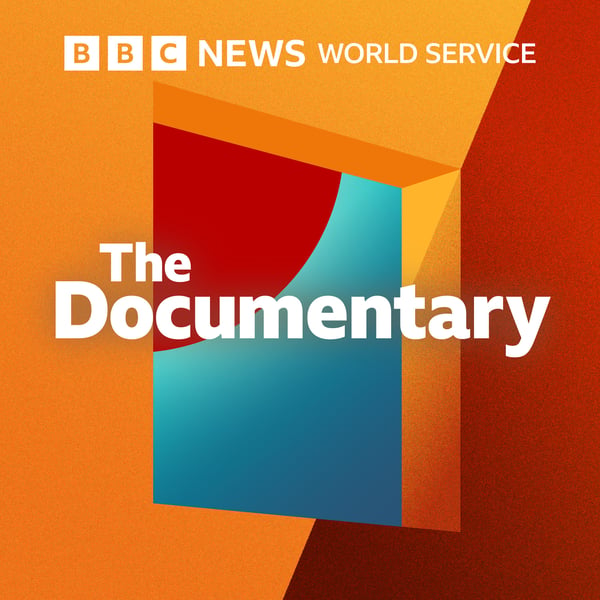Bonus: CrowdScience - How do fish survive in the deep ocean?
The Documentary Podcast
BBC
4.3 • 2.6K Ratings
🗓️ 5 September 2024
⏱️ 29 minutes
🧾️ Download transcript
Summary
In a bonus episode from CrowdScience - How do fish survive in the deep ocean?
When listener Watum heard about the Titan submersible implosion in the news in 2023, a question popped up in his mind: if a machine that we specifically built for this purpose cannot sustain the water pressure of the deep ocean, how do fish survive down there?
In this episode, we travel with marine biologist Alan Jamieson to the second deepest place in our oceans: the Tonga trench. Meanwhile, presenter Caroline Steel speaks to Edie Widder about the creatures that illuminate our oceans, and travels to Copenhagen to take a closer look one of the strangest deep sea creatures and its deep sea adaptations.
But even fish have their limits! Scientist Paul Yancey correctly predicted the deepest point that fish can live, and it all comes down to one particular molecule.
So is there anything living beyond these depths? Well, there is only one way to find out…
CrowdScience takes your questions about life, Earth and the universe to researchers hunting for answers at the frontier of knowledge. For more episodes just search for CrowdScience wherever you got this podcast.
Contributors: Prof Alan Jamieson, University of Western Australia Luke Siebermaier, Submersible Team Leader, Inkfish Dr Edie Widder, Ocean Research & Conservation Association Peter Rask Møller, Natural History Museum of Denmark Prof Paul Yancey, Whitman College
Presenter: Caroline Steel Producer: Florian Bohr Editor: Martin Smith & Cathy Edwards Production Co-ordinator: Ishmael Soriano Studio Manager: Steve Greenwood
(Image: Deep-sea fish - stock photo, Credit: superjoseph via Getty Images)
Transcript
Click on a timestamp to play from that location
| 0:00.0 | From the BBC World Service, this is the documentary, the home of original storytelling. |
| 0:06.0 | I'm Caroline Steele and welcome to this bonus episode of the podcast I host, Crowd Science, |
| 0:12.0 | where we take questions about life, Earth and the |
| 0:14.8 | universe to scientists searching for answers. |
| 0:17.6 | Thank you, Baku, Eso. You're ready for the water. Stand by to trust starboard. Break, break, bridges. We're starting this |
| 0:25.0 | starting for the water, stand by to the thrust starboard, break, bridge, yes so? |
| 0:26.0 | We're starting this episode in the South Pacific, close to the island nation of Tonga. |
| 0:32.0 | So the current time is exactly 8 o'clock in the morning, local time, and we'll wait for permission |
| 0:37.2 | to dive. |
| 0:38.6 | This is marine biologist Professor Alan Jameson. |
| 0:42.2 | He sat on the surface of the ocean in a submersible weighing more |
| 0:46.0 | than 12 tons. It's called Bakunawa or Baku for short. |
| 0:51.3 | Two. |
| 0:52.3 | All and secure, handrails are clear, swimming is clear, you have permission to dive. |
| 0:57.0 | And Alan isn't alone. |
| 0:58.9 | He's with pilot Luke Zebamire. |
| 1:00.9 | Zino, baku, handrails clear, swimmer clear, all lines clear, clear to dive, pumping in. |
| 1:07.4 | The tanks on top start to flood, which is going to almost double the weight of Baku. Alan and Luke are about to go very, very deep, |
| 1:17.9 | to a place few people have been before. Right, that's just left the surface, we're at about 25 meters now. |
| 1:27.0 | And already you can see the sunlight starting to diminish. |
| 1:31.0 | It's just beautiful shade of blue, which I believe is the only place you can see this particular shade of blue. |
| 1:37.0 | I'm approaching 50 meters now. |
... |
Please login to see the full transcript.
Disclaimer: The podcast and artwork embedded on this page are from BBC, and are the property of its owner and not affiliated with or endorsed by Tapesearch.
Generated transcripts are the property of BBC and are distributed freely under the Fair Use doctrine. Transcripts generated by Tapesearch are not guaranteed to be accurate.
Copyright © Tapesearch 2025.

